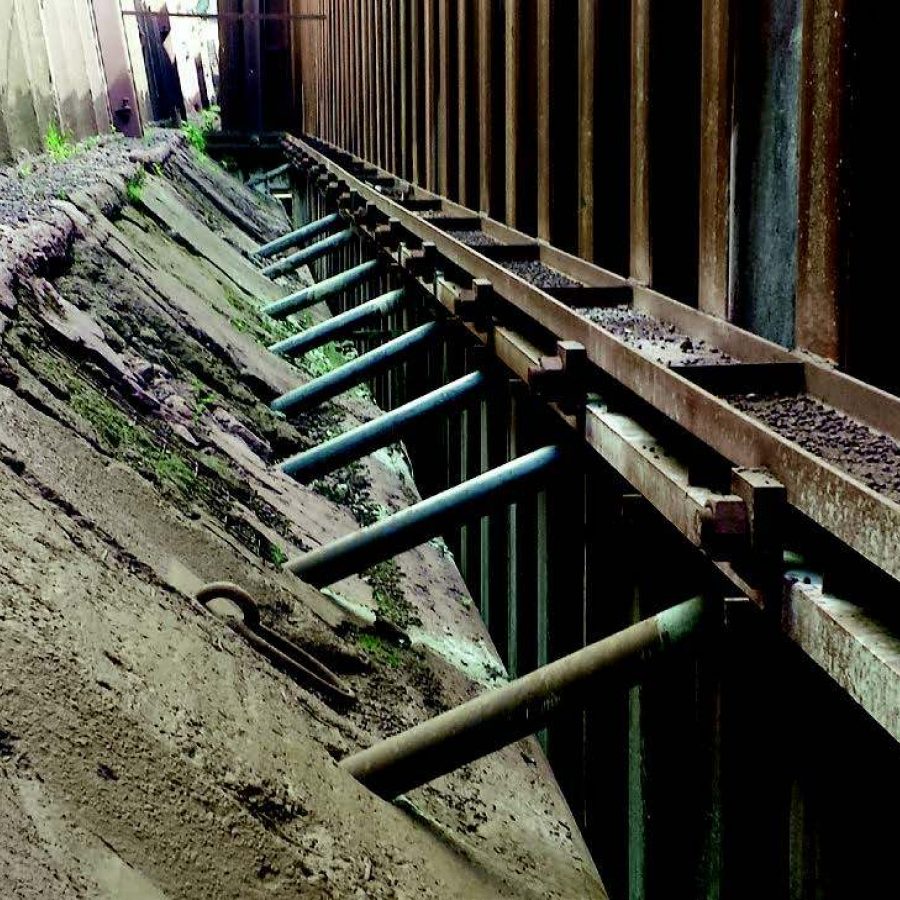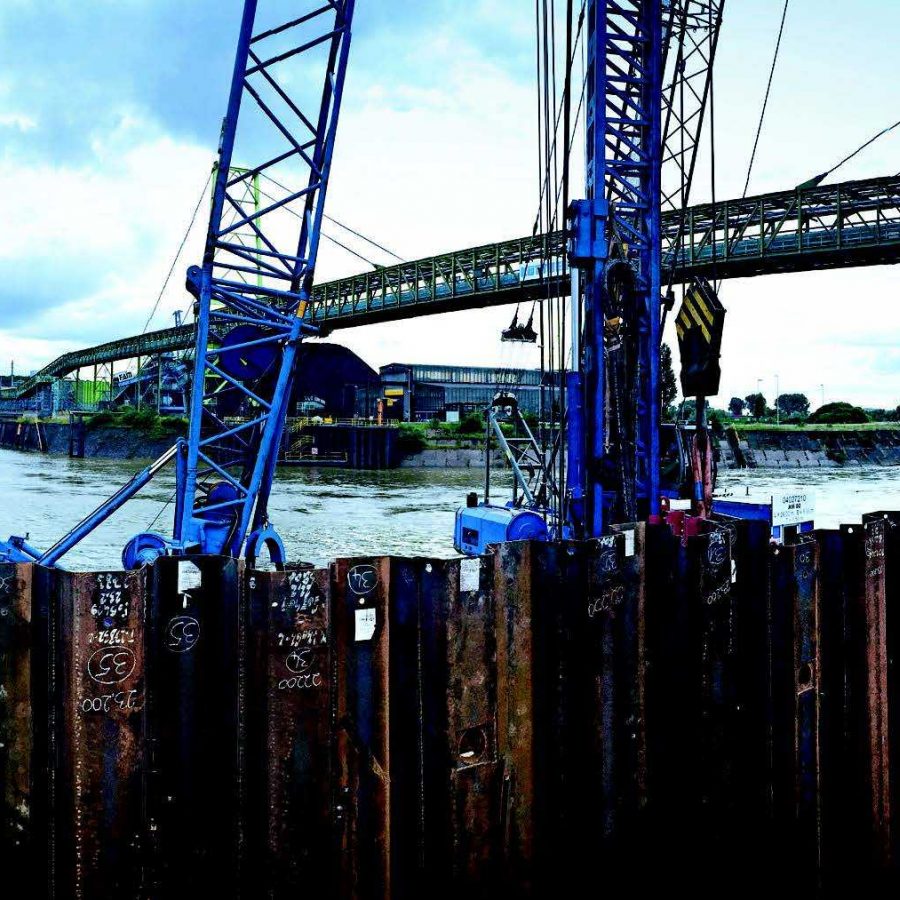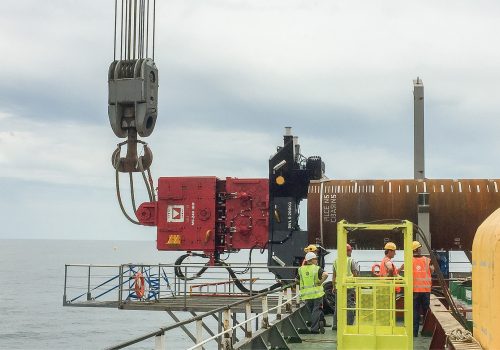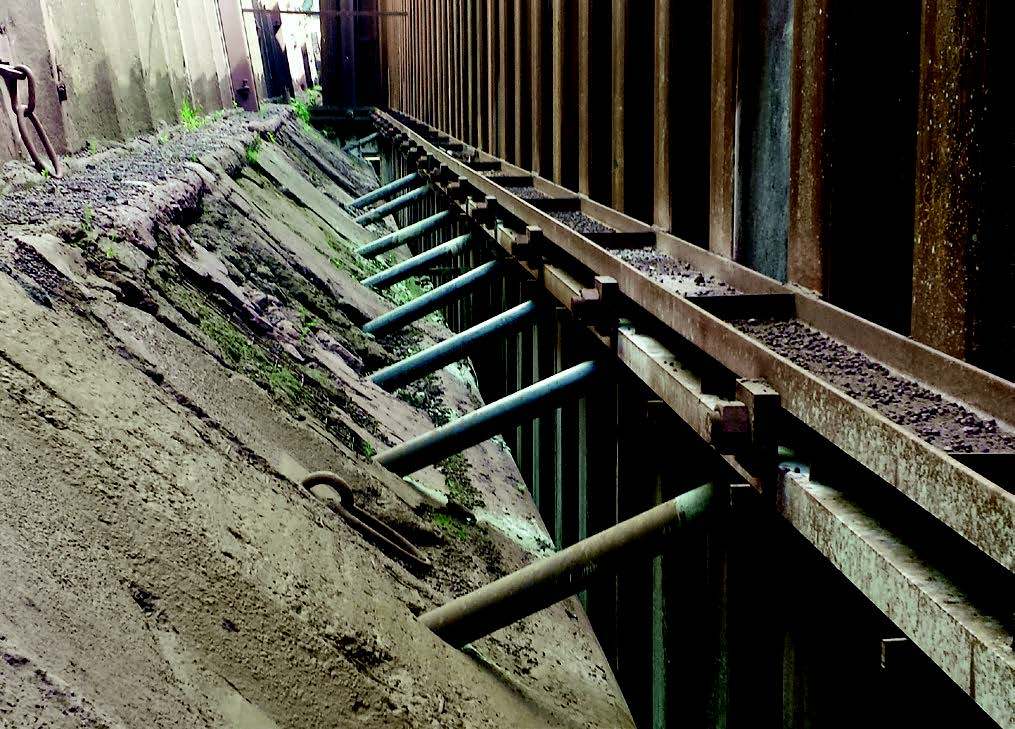TIE-BACK OF AN ARMORED STEEL SHEET PILE WALL WITH MICROPILES IN THE PORT OF SCHWELGERN
Schwelgern is a harbor in the north of Duisburg. Some of its bank edgings were in need of rehabilitation and could no longer withstand the growing demands. On the north bank, an armored steel sheet pile wall was to be placed in front of the existing bank wall over a length of around 400 meters and tied back at specified points. In addition to the complete technical processing, the planning of logistics and construction site operations was also in our hands.
There was a high degree of prefabrication on this project - for example, the factory installation of butt plates as well as ladder and bollard equipment. The base plates for the planned anchor elements were also welded in place at the factory.
Finally, more than 70 heavy-duty trucks delivered the sheet piles. Each week, a dredge leader vibrated in about 30 elements, working on the water side on a pontoon. A vibro-flushing process was used to drive the sheet pile sections to within one meter of reaching the statically specified embedment. Afterwards, they were re-drilled to the final depths by a high-speed hammer without flushing.
As the sheet pile wall was built, we used special fitting planks to compensate for dimensional tolerances. In addition, the inserted planks were backed with walings. These walings serve as load distribution beams in the longitudinal direction; moreover, they contribute to the alignment of the structure.
The finished sheet pile wall was tied back into the ground with micropiles. Our terra ASF micropile was used. This is a micropile system in accordance with DIN EN 14199, which we developed as a tension and compression pile. The system represents a further development of existing micropile systems, which is characterized by particularly high internal load-bearing capacities and reserves as well as great robustness and low deformations. Thanks to precise preliminary planning, all trades ran smoothly together.


you might also be interested in
-

Clear view: glass panels in Neufelderkoog
Here, a flood protection barrier including glass elements protects the inhabitants and visitors from storm tides. The glass breaks up the appearance of the approximately 800 meters long flood defence wall.
To the post -

Offshore work in the Juri Korchagin oil field in Russia
The Juri Korchagin oil field is located in the northern part of the Caspian Sea. There, the Lukoil company wanted to build an ice-resistant drilling platform consisting of two blocks.
To the post -

Flood Protection for the Yuyao Community in China
In the municipality of Yuyao, the Yuyao River was equipped with mobile flood protection along a length of about 4,700 metres to improve the quality of life of the citizens.
To the post
